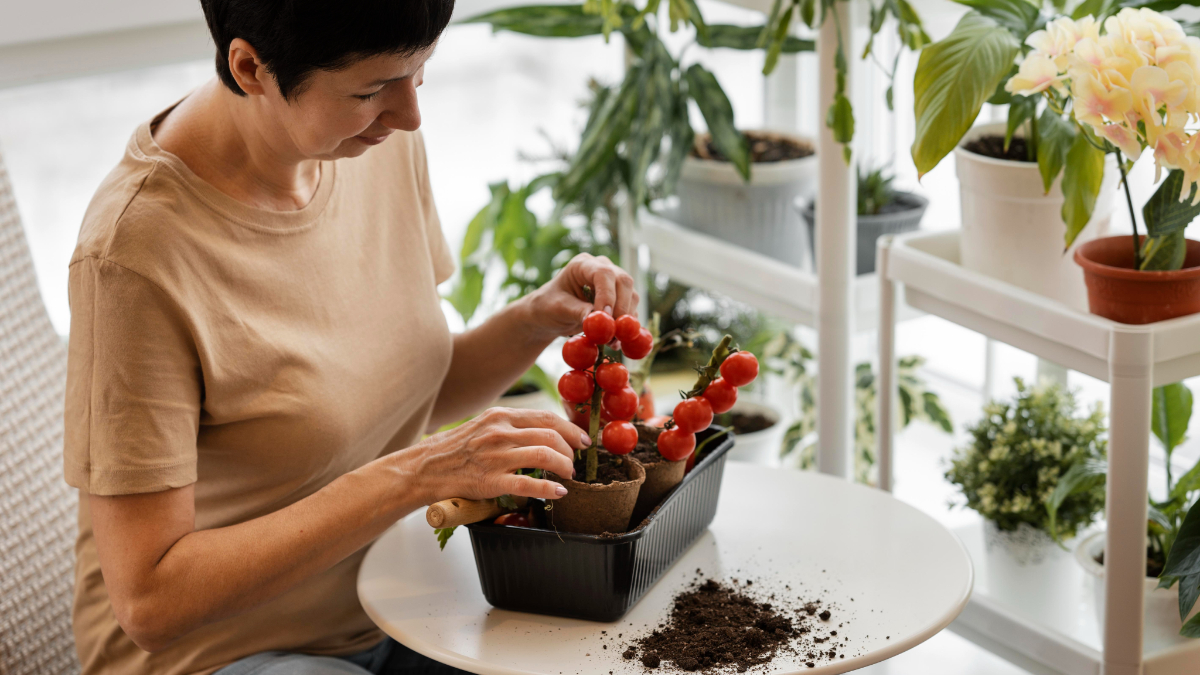
Anyone can grow their own vegetables, no matter where they live. Even if you don’t have a lot of space, there are plenty of vegetables that you can grow in containers. And if you do have a garden, there are many ways to get started with vegetable gardening.
In this article, we’ll discuss some of the benefits of growing your own vegetables. We’ll also give you some tips on how to get started so that you can enjoy fresh, delicious vegetables right from your own garden.
Benefits of Growing Your Own Vegetables
1) You’ll Know Where Your Food Comes From
There are many benefits to growing your own vegetables. Perhaps the most obvious benefit is that you’ll know exactly where your food came from. When you grow your own vegetables, you can be sure that they haven’t been treated with chemicals or pesticides. You’ll also know that they’re fresh since you’ll be harvesting them right from your garden.
Also, when you grow your own vegetables, you can choose to grow organic varieties. These are vegetables that are grown without the use of synthetic pesticides or fertilizers.
For example, you can buy organic seeds from a variety of sources. Or, you can look for organic vegetable starts at your local nursery.
2) You’ll Save Money
Another benefit of growing your own vegetables is that you can save money. Buying vegetables from the grocery store can be expensive, especially if you’re buying organic varieties. When you grow your own vegetables, you can save a lot of money over time.
For example, let’s say you spend $50 per week on groceries. If you were to grow your own vegetables, you could easily save $20 or more per week. Over the course of a year, that would add up to over $1,000 in savings!
3) You’ll Get Fresh Vegetables
Yet another benefit of growing your own vegetables is that you’ll get to enjoy fresh, delicious vegetables right from your garden. There’s nothing quite like harvesting your own food and then eating it immediately. Fresh fruits and vegetables are not only delicious, but they’re also more nutritious than their grocery store counterparts.
Greenhouses can be a great way to extend the growing season for your vegetables. If you live in a colder climate, a greenhouse can allow you to grow vegetables all year round. You could use an exaco junior orangerie greenhouse or a greenhouse for starting seeds. There are a variety of greenhouse options available, so you can find one that fits your needs and budget.
Some greenhouses are small and simple, while others are large and complex. You can even find greenhouses that come with automatic ventilation and lighting systems.
4) You Can Grow a Variety of Vegetables
When you grow your own vegetables, you’re not limited to the varieties that are available at the grocery store. You can grow any type of vegetable that you want, whether it’s a common vegetable like tomatoes or a more unusual vegetable like kohlrabi.
If you’re not sure what type of vegetables to grow, consider what you and your family like to eat. You can also ask friends and neighbors for recommendations. Once you’ve decided on a few types of vegetables, do some research to find out which varieties are best suited for your climate and soil type.
5) Planting The Seeds
After you’ve decided what types of vegetables you want to grow, it’s time to plant the seeds. You can start your seeds indoors in seed trays or pots. Or, you can plant them directly in the ground outside.
If you’re starting your seeds indoors, fill your seed trays or pots with a high-quality potting mix. Then, plant your seeds according to the instructions on the seed packet.
Be sure to keep your seedlings moist but not wet. Water them with a spray bottle or mister so that you don’t damage the delicate plants.
6) Transplanting
Once your seedlings are a few inches tall, they can be transplanted outdoors. Be sure to harden them off first by slowly acclimating them to the outdoors. Start by placing them in a shady spot for a few hours each day, and then gradually increase the amount of time they spend outdoors over the course of a week or two.
When you’re ready to transplant your seedlings, dig holes that are twice as wide as the pots or seed trays. Gently loosen the roots before placing the seedlings in the ground.
Fill in the holes with soil, and water the plants well.
7) Caring For Your Plants
Once your plants are in the ground, it’s important to care for them properly. Water them regularly, and fertilize them according to the instructions on the fertilizer package.
Be sure to keep an eye out for pests and diseases. If you see any problems, take action immediately. The sooner you catch a problem, the easier it will be to fix.
For example, if you see aphids on your plants, you can remove them by blasting them with water from a hose. Or, if you see powdery mildew, you can treat it with a homemade fungicide.
8) Harvesting Your Vegetables
Once your vegetables are ripe, it’s time to harvest them! Start by picking the vegetables that are ready first. Then, check your plants regularly for new vegetables that are ready to be harvested.
Be sure to harvest your vegetables early in the day for the best flavor. And, don’t forget to enjoy all of your hard work!
Additionally, you can also dehydrate or can your vegetables for long-term storage or to make your own homemade vegetable soup mix. Also, you can freeze your vegetables for later use. Just remember to blanch them first.
Growing your own vegetables can be a fun and rewarding experience. Not only are you able to enjoy fresh, delicious vegetables, but you also know exactly where they came from. You can grow a variety of vegetables, depending on what you and your family like to eat. And, best of all, it’s easy to get started! All you need is some basic equipment and a little bit of knowledge. So what are you waiting for? Get out there and start growing!




